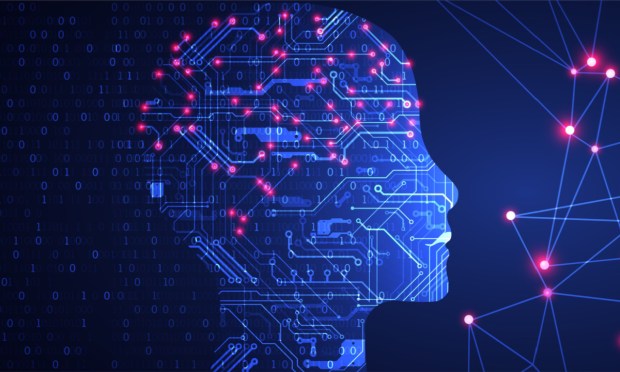Apple Takes Quieter Approach to AI Integrations

It seems like every company and its subsidiary is attempting a significant transformation with generative artificial intelligence (AI).
But for the technology’s innovative capabilities to move beyond the buzz, they will have to change consumers’ lives in more integrated ways than just creating a rash of new change-the-game announcements for them to read about.
This, as Apple barely mentioned the technology during its most recent “Apple Day” event this week (Sep. 12). That doesn’t mean the Cupertino giant isn’t bullish on AI’s applications, just that the world’s most valuable company is taking a quieter approach to its integrations relative to its large language model (LLM)-focused Big Tech peers.
After all, Apple CEO Tim Cook has said that AI and machine learning (ML) are “virtually embedded in every product” but that the company is introducing AI on a “very thoughtful basis.”
“We view AI and machine learning as core fundamental technologies that are integral to virtually every product that we build,” he told investors on the company’s most recent third-quarter earnings call.
And AI has for months been quietly reshaping Apple’s core software products behind the scenes, including by making the voice assistant Siri 25% more accurate for Apple Watch, integrating a voice isolation feature for calls, improving camera quality and capturing gesture-based prompts with new precision.
Given that industry leaders and global governments alike — even the Pope — have warned about the potential harms of AI if its development remains unchecked, applying the technology to subtler, everyday tasks that improve basic, but high-frequency, occasions could be a smart and safe way to unlock AI’s potential to change consumers’ lives for the better.
Read more: Big Tech Eyes Gen AI’s Potential to Revamp Voice Assistants
Intuitive, Not Intrusive, Generative AI
While generative AI chatbots like OpenAI’s ChatGPT, Google’s Bard and others from firms like Microsoft, Meta and Anthropic capture the public imagination while drawing increasing scrutiny from lawmakers, some tech giants are tapping into the technology’s usefulness when applied to more constrained occasions.
As reported by PYMNTS, both eBay and Amazon have launched generative AI capabilities to help sellers create and manage their product listings.
Amazon’s AI capabilities will help simplify the process of creating compelling product descriptions and titles for end-users, making it easier for sellers to list products and for shoppers to get the information they need. Fir its part, eBay is adding an AI-powered image-based listing tool that will allow sellers to simply take or upload a photo within the eBay app and watch as AI automatically fills in an item’s key details.
“What is key for most consumers is knowing that [AI] goes well beyond just a large language model [LLM], it goes well beyond what you’re sort of seeing at the surface, and it’s been touching and permeating a lot of parts of your daily lives for years,” Shaunt Sarkissian, founder and CEO of AI-ID, told PYMNTS.
As PYMNTS has written, while the “artificial” element of AI has its darker side, it is the “intelligence” aspect of the technology that enterprises and platforms want to capitalize on and integrate.
CFOs, for example, are increasingly tapping the tool to help optimize their working capital and treasury management approaches.
“AI and ML are transforming everything treasury, it’s the equivalent of the Industrial Revolution 4.0,” Jarrett Bruhn, managing director and head of data and AI in global transaction services at Bank of America, told PYMNTS.
And firms like Salesforce are increasingly integrating AI-powered chatbots and copilots into their offerings to create personalized customer journeys and capture future-fit efficiencies.
Read also: 21st Century Enterprise Technology Is Entering Its Third Act
Squeezing Efficiencies out of AI Technology
“AI’s only threat is to businesses that don’t leverage it,” Jeremiah Lotz, managing vice president, digital and data at PSCU, told PYMNTS.
And as Apple unveiled what was under the hood of its new hardware product range during this week’s event, it was clear that the world’s most valuable company, despite analyst fears it is falling behind on AI, is absolutely leveraging the technology.
A new chip, the S9, is powering the latest versions of the Apple Watch wearable, allowing for Siri voice requests to be handled on the device and not in the cloud — all thanks to AI.
In general, AI is helping Apple end-users perform more seamless and intuitive actions by processing information and data faster and more securely.
The new Apple Watches also feature a “double tap” functionality, where sensors detect movements that enable users to perform actions without touching the device itself.
As PYMNTS has covered, there’s a growing interest in, and use of, connected devices through which we track the progress of everything, from steps walked to our vitals to getting reminders about prescriptions. PYMNTS Intelligence show that a significant percentage of consumers use digital channels to monitor their health data on both a daily (26%) and weekly basis (11%).
Emergent payment features like tap-to-pay are accelerating at an equal clip, and the Apple Watch’s AI features could have a lot of room to run in the payment ecosystem — if it can stay on the good side of regulators.
“Tap to pay is going to change the payments industry,” PayPal Head of Product for Microbusiness Ed Hallett told PYMNTS. “The lack of friction is laughable.”

